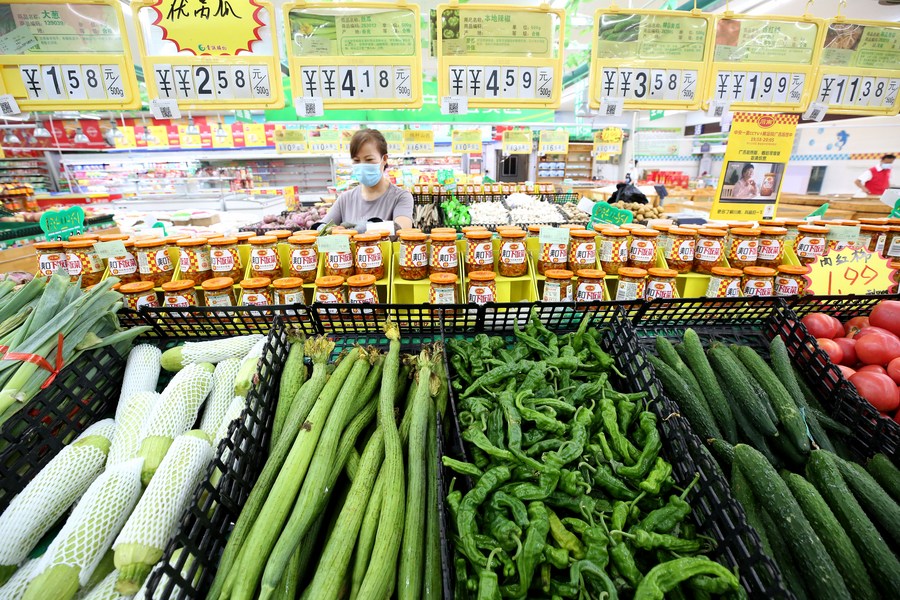China's CPI, PPI growth picks up pace amid rising costs
 0 Comment(s)
0 Comment(s) Print
Print E-mail Xinhua, November 10, 2021
E-mail Xinhua, November 10, 2021

China's consumer price index (CPI), a main gauge of inflation, rose 1.5% year on year in October, data from the National Bureau of Statistics (NBS) showed Wednesday.
The figure was higher than the 0.7% year-on-year growth recorded in September.
Specifically, non-food prices rose 2.4% from a year earlier, contributing about 1.97 percentage points to the CPI growth, said senior NBS statistician Dong Lijuan.
Food prices dropped 2.4%, with the price of pork, a staple meat in China, slumping 44%. However, the price of fresh vegetables, which declined 2.5% in September, saw a 15.9% increase last month, said Dong.
The NBS attributed October's CPI increase to unusual weather conditions, rising costs and supply-demand imbalance in some products.
On a monthly basis, CPI increased 0.7%. Food prices increased 1.7%, while non-food prices rose 0.4%.
The country has set its consumer inflation target at approximately 3% for the year 2021, according to this year's government work report.
On the industrial side, China's factory prices continued to pick up last month due to global factors and a strained domestic supply of key energy and raw materials.
The country's producer price index (PPI), which measures costs for goods at the factory gate, went up 13.5% year on year in October.
The figure went up from the 10.7% year-on-year increase registered in September. On a monthly basis, China's PPI rose 2.5% in October.
Specifically, the rising prices of international crude oil have driven the prices of domestic oil-related industries, with the PPI for the oil exploitation sector up 7.1% from a month ago, said Dong.
Caused by the tight supply of coal last month, the factory-gate prices for coal mining and washing industry increased 20.1% month on month, while that for coal processing industry saw 12.8% growth.
In general, inflation has put limited pressure on the country's monetary policy, but imbalances are mounting in both the domestic and global economic recovery, said Wen Bin, chief analyst at China Minsheng Bank.
The country should continue its efforts to tackle the supply shortfalls of major energy products and help market entities cope with the rising costs of raw materials, Wen said.
China's energy crunch is expected to alleviate as the country's multiple measures to boost supply and rein in price hikes have started to take effect.
The country's coal output has sustained its growth momentum since mid-October. The maximum daily output of coal has hit 11.93 million tonnes, a record high in recent years, said the National Development and Reform Commission, the economic planner.
Coal for power generators and heating suppliers is guaranteed as mid- to long-term coal supply contracts have roughly covered demand, according to the economic planner.
Increased coal output and inventories at power plants will help drive down the soaring coal prices, the commission said, noting that prices are expected to continue their decline as production and inventories rise further.






Go to Forum >>0 Comment(s)